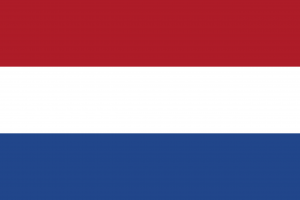Language/Dutch/Culture/Geography-and-Landmarks
 Հայերէն
Հայերէն Български език
Български език 官话
官话 官話
官話 Hrvatski jezik
Hrvatski jezik Český jazyk
Český jazyk English
English Suomen kieli
Suomen kieli Français
Français Deutsch
Deutsch עברית
עברית हिन्दी
हिन्दी Magyar
Magyar Bahasa Indonesia
Bahasa Indonesia فارسی
فارسی Italiano
Italiano 日本語
日本語 Қазақ тілі
Қазақ тілі 한국어
한국어 Lietuvių kalba
Lietuvių kalba Νέα Ελληνικά
Νέα Ελληνικά Şimali Azərbaycanlılar
Şimali Azərbaycanlılar Język polski
Język polski Português
Português Limba Română
Limba Română Русский язык
Русский язык Српски
Српски Español
Español العربية القياسية
العربية القياسية Svenska
Svenska Wikang Tagalog
Wikang Tagalog தமிழ்
தமிழ் ภาษาไทย
ภาษาไทย Türkçe
Türkçe Українська мова
Українська мова Urdu
Urdu Tiếng Việt
Tiếng ViệtAs a Dutch language teacher, I believe that it's not only important to learn the language but also to learn about the culture of the country. Therefore, in this lesson, we will be discussing the geography and landmarks of the Netherlands.
Geography
The Netherlands is a small country located in Northwestern Europe. It is known for its flat landscape, canals, tulip fields, and windmills. The country is bordered by Germany to the east, Belgium to the south, and the North Sea to the north and west.
The country is divided into 12 provinces, each with its own capital city. The most populous cities in the Netherlands are Amsterdam, Rotterdam, The Hague, and Utrecht.
The Netherlands is famous for its system of water management, which includes dikes and canals. These systems are essential in preventing floods, as much of the country is situated below sea level. The Dutch's expertise in water management is well-known across the world.
Landmarks
The Netherlands is home to many architectural and cultural landmarks that attract millions of tourists every year. Here are some of the most famous landmarks in the country:
Keukenhof Gardens
The Keukenhof Gardens, also known as the Garden of Europe, is located in Lisse and is one of the largest flower gardens in the world. It is open annually from March to May and features more than 7 million tulips, as well as other flowers such as daffodils and hyacinths.
Rijksmuseum
The Rijksmuseum, located in Amsterdam, is the largest art museum in the country. It is home to over 8,000 works of art, including paintings from Dutch masters such as Rembrandt, Vermeer, and Frans Hals.
Van Gogh Museum
The Van Gogh Museum, also located in Amsterdam, is dedicated to the works of Vincent van Gogh. It houses the largest collection of the artist's works, including his famous Sunflowers painting.
Anne Frank House
The Anne Frank House, located in Amsterdam, is the house where Anne Frank and her family hid from the Nazis during World War II. It has since been turned into a museum and is visited by thousands of people each year.
Kinderdijk Windmills
The Kinderdijk Windmills, located near Rotterdam, are a UNESCO World Heritage Site featuring 19 windmills that were originally built in the 18th century. The windmills were used to pump water out of the surrounding land, enabling the Dutch to create more farmland.
Conclusion
Learning about the geography and landmarks of the Netherlands is not only fascinating but also essential in understanding the country's rich culture and history. In the next lesson, we will be discussing the history and traditions of the Netherlands.
Sources

